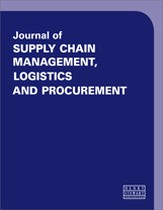From surviving to thriving: How to increase supply chain resiliency during tumultuous times
Abstract
The past few years have highlighted that lean supply chains are both unreliable and lack resiliency; there is no longer any cushion or room for error, and they perform best with predictability. The increased instability caused by major global disruptive events has placed immense pressure on supply chains. Therefore, companies must adjust how their supply chains function. This paper seeks to answer the question: what can be done to increase supply chain resiliency and reliability?
The full article is available to subscribers to the journal.
Author's Biography
Danaka Porter obtained her Lean certification in 2013 before completing her Master of Engineering in systems and supply chain from MIT. Since graduating from MIT Danaka became a partner at iota consulting, where she consults in supply chain, project management, and data analytics — specifically in heavy manufacturing and technology. Danaka has been a sessional lecturer since 2019 at the Dhillon School of Business, where she teaches Supply Chain and Project Management. In autumn 2022 Stukent published her ‘Principles of Supply Chain Management and Operations’ courseware; her ‘Introduction to Project Management’ will be available through Stukent in Autumn 2024. In 2019 Danaka cofounded VitaNova Technologies (VNT), a fertility company in the US, where she is currently the Chief Operations Officer. At VNT she wrote algorithms to better match surrogates and egg donors with intended parents. In keeping with a life of continuous learning, Danaka is currently completing her PhD in cardiology at the Cumming School of Medicine, where she is optimising the workflow of specific cardiac software to better find, label and calculate two biological markers of sudden cardiac death.
Citation
Porter, Danaka (2024, June 1). From surviving to thriving: How to increase supply chain resiliency during tumultuous times. In the Journal of Supply Chain Management, Logistics and Procurement, Volume 6, Issue 4. https://doi.org/10.69554/BUTR2002.Publications LLP
